Frost is just around the corner, and you haven't covered up yet.spring your favorite flowers on the garden plot? We will tell you what you can do for your fragrant pets and how to hide them from the deadly frosts All happy owners of garden or homestead plots are divided into two categories: those who cannot imagine a plot of land without, and those who hate these beds and demonstratively despise the first category, declaring their commitment to a green lawn. But this confrontation loses all relevance when it comes to flowers. Fans of beds and connoisseurs of lawns are even ready to exchange seedlings, seeds or bulbs of their favorite plants, cherishing and cherishing them throughout the summer season. But the end of summer does not mean that you can forget about flowering flower beds until spring. Delicate creatures that give you a scent that makes your nostrils flare and you breathe in the heady, tart air that is incomparable to any perfume, are defenseless against frost, like ruble savings against inflation. If you do not want to get a nervous shock in the spring, seeing dead stems and frozen bulbs in your favorite flowerbed, take urgent measures to prepare flowers for winter. And we will tell you what to do, using the example of ten of the most common inhabitants of flower beds. And we advise you to admire once again the roses that have already been created by human hands. How to prepare roses for winter At the end of October or the beginning of November - be guided by the weather - take care of climbing and varietal roses. Your task is to completely remove all the leaves, otherwise they will begin to rot under cover in winter and ruin the entire bush. Cut the shoots themselves to half their length. Snow is the best way to protect a pruned rose bush from frost. Collect the snow immediately after it falls and cover the flowerbeds with it. However, in early cold weather, the rose bush may freeze before heavy snowfalls begin. Gardeners cover the cut stems with spruce sawdust, leaves, and spruce branches. Synthetic covering material, such as lutrasil, agrotex, or spunboard, is also ideal.
 How to prepare clematis for winter BeforeTo prepare clematis for winter, determine which varieties are growing in your flowerbed. Winter-hardy ones do not require as much care as their more capricious relatives. All varieties need to be pruned, but rather for the purpose of thinning, especially if the clematis blooms on last year's shoots. Cut the shoots by about a third, then very carefully remove the remaining part from the support. This year's shoots should be cut at a height of one or two pairs of buds above ground level. Do not neglect spraying with antifungal drugs so as not to see an unpleasant surprise in the spring when you open the shoots after wintering. You can powder them with wood ash. Then you need to hill up the remaining shoots to a height of about 15 cm and pour peat, compost or humus into the center. Covering should be done at an average air temperature of -5-7 °C, certainly in dry weather. Gardeners use the same spruce branches, brushwood, crumbled polystyrene foam. By the way, the latter guarantees an air gap that retains heat. For the same purpose, a small pyramid of improvised materials is installed around the bush. Pour dry leaves on top, on top of which install an inverted box. You can use roofing felt and roofing felt. Snow retention is guaranteed! If the winter has shown itself to be frosty, but with little snow, you will have to pour a layer of pre-prepared soil on top.
How to prepare clematis for winter BeforeTo prepare clematis for winter, determine which varieties are growing in your flowerbed. Winter-hardy ones do not require as much care as their more capricious relatives. All varieties need to be pruned, but rather for the purpose of thinning, especially if the clematis blooms on last year's shoots. Cut the shoots by about a third, then very carefully remove the remaining part from the support. This year's shoots should be cut at a height of one or two pairs of buds above ground level. Do not neglect spraying with antifungal drugs so as not to see an unpleasant surprise in the spring when you open the shoots after wintering. You can powder them with wood ash. Then you need to hill up the remaining shoots to a height of about 15 cm and pour peat, compost or humus into the center. Covering should be done at an average air temperature of -5-7 °C, certainly in dry weather. Gardeners use the same spruce branches, brushwood, crumbled polystyrene foam. By the way, the latter guarantees an air gap that retains heat. For the same purpose, a small pyramid of improvised materials is installed around the bush. Pour dry leaves on top, on top of which install an inverted box. You can use roofing felt and roofing felt. Snow retention is guaranteed! If the winter has shown itself to be frosty, but with little snow, you will have to pour a layer of pre-prepared soil on top.
 How to prepare dahlias for winter Very importantCarefully inspect the dahlia bushes before you begin arranging their winter storage, remove damaged shoots. At the first frost, cut the stems, leaving 15 cm above the bulbous part. After 2-3 weeks, when the bulbs have matured and become stronger, dig them up. This must be done very carefully, grabbing the soil with a pitchfork approximately 25 cm from the bush. Shake off or remove excess soil from the tubers, cut off old roots with pruning shears. Trim young roots, leaving no more than 12 cm. Having determined the location of the neck, separate the tubers that have not yet had time to harden, and place them to dry in a ventilated, but not heated room. After a week, cut off the remaining roots and shorten the stems, leaving no more than 3 cm. If you want to store dahlia tubers together with a lump of earth, follow the same procedures, but do not clean off the soil. Place the planting material after drying in boxes or crates directly with the soil.
How to prepare dahlias for winter Very importantCarefully inspect the dahlia bushes before you begin arranging their winter storage, remove damaged shoots. At the first frost, cut the stems, leaving 15 cm above the bulbous part. After 2-3 weeks, when the bulbs have matured and become stronger, dig them up. This must be done very carefully, grabbing the soil with a pitchfork approximately 25 cm from the bush. Shake off or remove excess soil from the tubers, cut off old roots with pruning shears. Trim young roots, leaving no more than 12 cm. Having determined the location of the neck, separate the tubers that have not yet had time to harden, and place them to dry in a ventilated, but not heated room. After a week, cut off the remaining roots and shorten the stems, leaving no more than 3 cm. If you want to store dahlia tubers together with a lump of earth, follow the same procedures, but do not clean off the soil. Place the planting material after drying in boxes or crates directly with the soil.

 How to Prepare Chrysanthemums for Winter HardyChrysanthemums do not require preparation for wintering and covering. But those that will certainly freeze without the owner's help, we will carefully process. And we have two options: dig up the plants entirely and place them in a cool room until spring, or create conditions for wintering directly on the flowerbed. Everything is clear with the first option, let's consider the second in more detail. After waiting for the cold weather, we cut the bushes, leaving a part of the stem about 10 cm. Then we hill up, avoiding the formation of holes and grooves where moisture can accumulate and freeze. This will not do any good for chrysanthemums. Many varieties are sufficiently covered with dense snow, but those less resistant to frost will need additional protection. Place a row of bricks around the bush after pruning it, put a piece of board, slate or iron on top. Press it down from above so that a gust of wind does not expose your flowerbed. Chrysanthemums love such conditions, with a warm layer of air and ventilation. When real frosts make themselves known, sprinkle dry leaves on top, put spruce branches or synthetic material. But do not pile it all up in a heavy heap. Chrysanthemums are generally unpredictable, so try leaving one bush of each variety to overwinter under the snow, and prepare the second bush in accordance with our advice. In the spring, compare the results and decide on subsequent wintering for these luxurious beauties.
How to Prepare Chrysanthemums for Winter HardyChrysanthemums do not require preparation for wintering and covering. But those that will certainly freeze without the owner's help, we will carefully process. And we have two options: dig up the plants entirely and place them in a cool room until spring, or create conditions for wintering directly on the flowerbed. Everything is clear with the first option, let's consider the second in more detail. After waiting for the cold weather, we cut the bushes, leaving a part of the stem about 10 cm. Then we hill up, avoiding the formation of holes and grooves where moisture can accumulate and freeze. This will not do any good for chrysanthemums. Many varieties are sufficiently covered with dense snow, but those less resistant to frost will need additional protection. Place a row of bricks around the bush after pruning it, put a piece of board, slate or iron on top. Press it down from above so that a gust of wind does not expose your flowerbed. Chrysanthemums love such conditions, with a warm layer of air and ventilation. When real frosts make themselves known, sprinkle dry leaves on top, put spruce branches or synthetic material. But do not pile it all up in a heavy heap. Chrysanthemums are generally unpredictable, so try leaving one bush of each variety to overwinter under the snow, and prepare the second bush in accordance with our advice. In the spring, compare the results and decide on subsequent wintering for these luxurious beauties.
 Our opinion:— Remember that you need to be very careful when using foliage as a covering material. Oak foliage is ideal for this — it does not have time to rot in one season, which reduces the risk of fungi and mold developing under the snow. If an oak tree does not grow near or on your site, choose undamaged and dry leaves to cover the plants. Spruce branches should also be carefully examined before collecting them — branches should be cut from the lower part of the trees, and damaged or yellowed ones should not be brought to the site. How to prepare pansies for winter In cold latitudes, it is better to dig this plant up in the fall along with the roots and place it in a greenhouse or a cool cellar for the winter months. If the climate in your place of residence is more gentle, simply cover each bush with spruce sawdust or any other covering material. When snow falls, rake it into a mound and pile it on top of the previous layers, which will cover the pansies until spring.
Our opinion:— Remember that you need to be very careful when using foliage as a covering material. Oak foliage is ideal for this — it does not have time to rot in one season, which reduces the risk of fungi and mold developing under the snow. If an oak tree does not grow near or on your site, choose undamaged and dry leaves to cover the plants. Spruce branches should also be carefully examined before collecting them — branches should be cut from the lower part of the trees, and damaged or yellowed ones should not be brought to the site. How to prepare pansies for winter In cold latitudes, it is better to dig this plant up in the fall along with the roots and place it in a greenhouse or a cool cellar for the winter months. If the climate in your place of residence is more gentle, simply cover each bush with spruce sawdust or any other covering material. When snow falls, rake it into a mound and pile it on top of the previous layers, which will cover the pansies until spring.
 How to Prepare Tulips for Winter TheoreticallyTulip bulbs are not afraid of frost, especially if they have managed to take root. But it is better not to experiment and play it safe. Snow cover for tulips is like a blanket for a chilled guest. And the higher this cover, the better. It will not be blown away by the wind, it will not settle on warm days. To be on the safe side, put cut branches of currants or raspberries on the tulip beds. They will perfectly fulfill their function of snow retention.
How to Prepare Tulips for Winter TheoreticallyTulip bulbs are not afraid of frost, especially if they have managed to take root. But it is better not to experiment and play it safe. Snow cover for tulips is like a blanket for a chilled guest. And the higher this cover, the better. It will not be blown away by the wind, it will not settle on warm days. To be on the safe side, put cut branches of currants or raspberries on the tulip beds. They will perfectly fulfill their function of snow retention.

 How to prepare gladioli for winter If youIf you want to enjoy the sight of these luxurious flowers every year, you will have to tinker with them in the fall. Varietal gladioli should be planted in a flowerbed every spring and dug up every fall for wintering in conditions that are comfortable for them. On a dry sunny day, when the air temperature is at zero degrees, carefully dig up the bulbs, capturing a lump of earth so as not to damage the plants. Cut off the stems, leaving no more than 2 cm. Rinse healthy bulbs in water acidified with potassium permanganate, lay them out on newspaper to dry for a week, and then sort them. Each bulb should be wrapped in newspaper and placed in a cool basement or in the bottom drawer of the refrigerator. Once a week, check the condition of your pets - they should not sprout, rot or freeze. You can use cardboard boxes with holes for storage. In general, it is quite a troublesome undertaking. For gardeners who are not concerned about preserving the variety, frost-resistant gladioli species have been bred. They can survive the winter in a flowerbed, but you will have to be a bit more scurrying here too. The so-called wild gladioli are planted in September, by the time frost sets in they have already taken root and can survive the winter under a layer of dry leaves, spruce branches and, of course, snow again.
How to prepare gladioli for winter If youIf you want to enjoy the sight of these luxurious flowers every year, you will have to tinker with them in the fall. Varietal gladioli should be planted in a flowerbed every spring and dug up every fall for wintering in conditions that are comfortable for them. On a dry sunny day, when the air temperature is at zero degrees, carefully dig up the bulbs, capturing a lump of earth so as not to damage the plants. Cut off the stems, leaving no more than 2 cm. Rinse healthy bulbs in water acidified with potassium permanganate, lay them out on newspaper to dry for a week, and then sort them. Each bulb should be wrapped in newspaper and placed in a cool basement or in the bottom drawer of the refrigerator. Once a week, check the condition of your pets - they should not sprout, rot or freeze. You can use cardboard boxes with holes for storage. In general, it is quite a troublesome undertaking. For gardeners who are not concerned about preserving the variety, frost-resistant gladioli species have been bred. They can survive the winter in a flowerbed, but you will have to be a bit more scurrying here too. The so-called wild gladioli are planted in September, by the time frost sets in they have already taken root and can survive the winter under a layer of dry leaves, spruce branches and, of course, snow again.

 How to prepare peonies for winter Peonies are definitelyneed to be covered for the winter if you want to admire their flowering for a long time. The unexpected behavior of these plants also includes their unpredictable reaction to the place where they are planted - in one corner of the garden they endure the winter easier, in another - worse. You will have to determine this empirically. Although we can give some recommendations on this issue. Peonies growing between bushes, trees and near a fence are less capricious about wintering. Apparently, the whole point here is good snow retention. Enhance its positive effect by mulching the peony bush in already known ways: sawdust, humus, branches. You can put an inverted box on top, and on top of it - insulating material. A pyramid of spruce branches, which you erect on top of this structure, will definitely add reliability to the warming and protective composition, and you - peace of mind. Yes, and don’t forget to cut off the peony stems before the frost sets in, leaving only a few centimeters.
How to prepare peonies for winter Peonies are definitelyneed to be covered for the winter if you want to admire their flowering for a long time. The unexpected behavior of these plants also includes their unpredictable reaction to the place where they are planted - in one corner of the garden they endure the winter easier, in another - worse. You will have to determine this empirically. Although we can give some recommendations on this issue. Peonies growing between bushes, trees and near a fence are less capricious about wintering. Apparently, the whole point here is good snow retention. Enhance its positive effect by mulching the peony bush in already known ways: sawdust, humus, branches. You can put an inverted box on top, and on top of it - insulating material. A pyramid of spruce branches, which you erect on top of this structure, will definitely add reliability to the warming and protective composition, and you - peace of mind. Yes, and don’t forget to cut off the peony stems before the frost sets in, leaving only a few centimeters.
 How to Prepare Daisies for WinterDaisies are easy and hassle-free: they spend the entire winter under the snow, and there is no need to trim them. But in case of severe frosts, the tender roots of the immature flowers may suffer, so use a little peat as a precaution, adding it under the young plants.
How to Prepare Daisies for WinterDaisies are easy and hassle-free: they spend the entire winter under the snow, and there is no need to trim them. But in case of severe frosts, the tender roots of the immature flowers may suffer, so use a little peat as a precaution, adding it under the young plants.

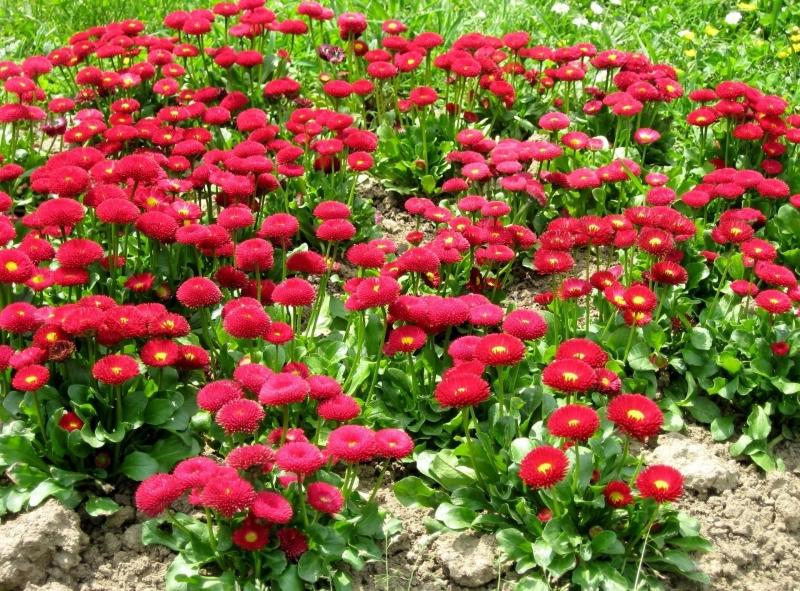 Our opinion:— When covering plants, do not press the insulating layers tightly to the ground and to the stems and cuttings, do not tamp them. There should be air between them, which will retain heat and create the natural ventilation necessary to prevent mold and rot. How to prepare hydrangeas for winter Imagine that breeders have developed varieties of hydrangea that can winter even on Sakhalin at a temperature of minus 35 ° C. But we will talk about ordinary varieties available to gardeners in mid-latitudes. All hydrangeas require increased attention before wintering, which is best done in advance. If you are an experienced gardener, you know that already in September you need to remove the lower leaves from the shoots of these plants to give the shoots a chance to lignify and thus survive the winter more easily. On the eve of frost, you should remove almost all the leaves, leaving only the very top ones, which will protect the upper flower buds. There are several ways to cover hydrangeas, but we will tell you about the simplest one. Lightly wrap the shoots with rope and place them on a board on the ground or on spruce branches. Press this bundle down with bricks or stones for reliability, and cover it with dry leaves or lutrasil. You can add a little soil on top, and the snow cover will complete the process of protecting your flowering plants so that they can bloom with renewed vigor.
Our opinion:— When covering plants, do not press the insulating layers tightly to the ground and to the stems and cuttings, do not tamp them. There should be air between them, which will retain heat and create the natural ventilation necessary to prevent mold and rot. How to prepare hydrangeas for winter Imagine that breeders have developed varieties of hydrangea that can winter even on Sakhalin at a temperature of minus 35 ° C. But we will talk about ordinary varieties available to gardeners in mid-latitudes. All hydrangeas require increased attention before wintering, which is best done in advance. If you are an experienced gardener, you know that already in September you need to remove the lower leaves from the shoots of these plants to give the shoots a chance to lignify and thus survive the winter more easily. On the eve of frost, you should remove almost all the leaves, leaving only the very top ones, which will protect the upper flower buds. There are several ways to cover hydrangeas, but we will tell you about the simplest one. Lightly wrap the shoots with rope and place them on a board on the ground or on spruce branches. Press this bundle down with bricks or stones for reliability, and cover it with dry leaves or lutrasil. You can add a little soil on top, and the snow cover will complete the process of protecting your flowering plants so that they can bloom with renewed vigor.

How to prepare roses and other flowers on the plot for winter – etk-fashion.com



